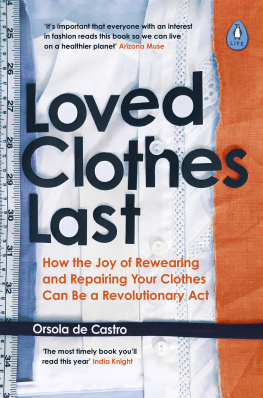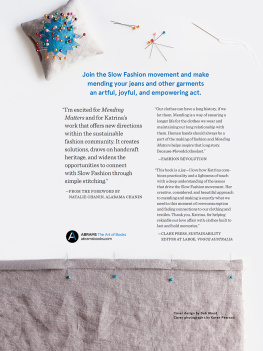Contents
Guide
MEND & PATCH
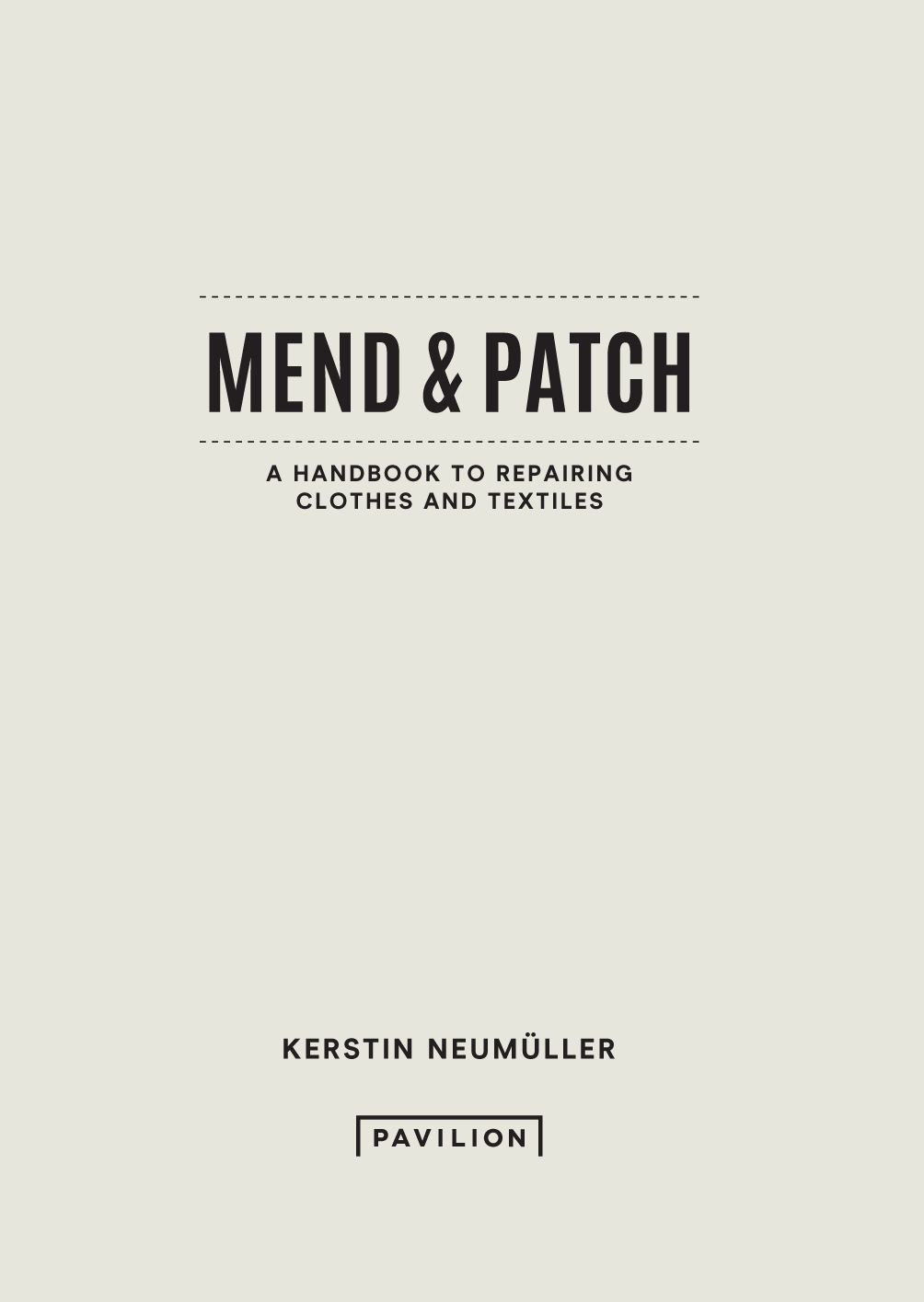


Foreword
Surely, one of the saddest things ever is to throw a beloved favourite garment away because its got holes in it? Over the years Ive met many people who have had their own solutions to the problem, and what fascinates me is that there arent any rights or wrongs. After spending a week with a mender who made miraculously invisible repairs by weaving in a piece of fabric over the hole, I met up with my punk mate who said, Yes, of course I always carry my mending kit with me! And then he fished textile glue and a patch with a band name printed on it out of his bag. Whenever his trousers tore and it happened quite often he would simply glue on a new patch and that was that!
Today I run a clothes store in Stockholm together with my partner Douglas, who is a material nerd just like me. We fill our shop with garments that are made to last and that just get better with time. But even the best clothes will tear sooner or later, so in the furthest corner of the shop weve set up a mending studio. When its quiet in the shop, I sit there by the sewing machine and give a new lease of life to peoples favourite old jeans. Some people prefer discreet and invisible repairs, while others want them to take pride of place and be highly visible. I think that the care you show when mending a garment strengthens your connection to it, as if the repair becomes a part of the history of the person who wears the garment. Many jeans come back to the mending studio year after year and, in a way, you can follow the wearers lives by looking at their jeans! Wear from tobacco boxes and phones appears or disappears, someone starts to cycle and wears down the right leg on the chain, someone else has a baby and the jeans tear on the knees from spending so much time on the floor.
It might seem as if I want to pick on those who like to buy new clothes but its actually the other way around! Buy what you want, and try to find the most hardwearing and durable variety. When your favourite garments have had their wear and tear, take out this book and save them.
Kerstin Neumller

Before you start
For those who dont sleep with a needle and thread under their pillow, mending a garment might feel like a big undertaking but do it in small steps and it will be fine. My first and best tip is to work with fabrics that you like, because its a lot more fun to mend with a patch of a nice fabric than with something youve found at the bottom of the sock drawer.
All damaged garments can be mended, but sometimes it can involve replacing the majority of the fabric surface and in these cases you have to ask yourself whether its worth the work. If its the first time youve done any mending, its a good idea to make a little test patch before you start to get a feel for the technique.
WHAT DOES GOOD QUALITY ACTUALLY MEAN?
Good-quality garments will last for longer before they tear, and they are also often easier to mend than garments that are produced with the primary aim being to make them cheap. The tricky thing with the term quality is that there are many interpretations of what the word actually means; its very often used to describe something that is generally good, so the words meaning has started to become diluted.
When it comes to clothes, I usually look out for natural materials that arent mixed with synthetics. Its not that clothes from synthetic materials cant be of good quality, but the mix usually isnt that great. I also tend to look at the garments seams to see if any threads are loose and, most importantly, I feel the fabric to check if its something I would like to wear against my body.
I completely avoid clothes that have been treated to look as if theyve already been worn for a long time for example, jeans that have been washed multiple times, and sometimes also ripped in various artful ways, to make them look as if theyve already been worn for a few years before they reached the shop shelf. This all has an effect on the quality and these clothes tend to have a much shorter lifespan than clothes without artificial wear and tear.

ESSENTIAL EQUIPMENT
LINEN THREAD Linen thread isnt essential, but its very pretty to sew with. Shiny and strong!
SEWING MACHINE THREAD My mum says that Gtermann threads are the best and Ive never had any reason to doubt that.
NEEDLE THREADER Slot the little wire loop through the eye of the needle and insert the thread into the loop. Pull through both the loop and the thread, and the needle is threaded without you having to pinpoint its eye!
OPEN-ENDED THIMBLE Similar to a standard thimble. Put one on the finger you use for pushing the needle through the fabric when sewing by hand to avoid getting pockmarked dents in your fingers.
TAPE MEASURE For measuring things. More flexible than a ruler.
TAILORS CHALK Can be bought in haberdashery shops and is used for marking where to put your stitches. In emergencies, blackboard chalks can be used as a substitute.
EMBROIDERY HOOP Used for stretching a fabric that you want to hand sew and to prevent the fabric from puckering while you work on it. Release the screw to separate the two hoops and place one hoop on either side of the fabric that you want to stretch. Push the smaller hoop into the larger one, so that the fabric in between is taut and flat, and then tighten the screw again.
KNITTING NEEDLES I usually use double-pointed needles.
SILK THREAD Buy at flea markets. Sort them by colour or just chuck them into a tin. Useful for many decorative and strong seams.
SCISSORS Get a sharp pair of scissors if youre intending to cut a lot of fabric!
TEXTILE GLUE You can get both water-based and latex-based textile glue. I prefer latex-based, because its the quickest to dry.
BEESWAX Used for waxing threads for hand sewing.
CROCHET HOOK Perfect for picking up unravelled stitches on knitted garments.
NEEDLES Invest in a few different sizes. A needle thats too thick can be impossible to use for sewing dense fabrics and is more suitable for loosely woven fabrics, while a needle that is too thin will bend and break if you use it for sewing thick fabrics.
HOLLOW PUNCH A metal rod with a circular die in one end that can be used for punching round holes in things.

STITCHES
RUNNING STITCH
I usually call it standard up-and-down stitch if people think running stitch sounds strange.
TACKING (BASTING) STITCH
Used instead of pins to hold layers of fabric in place while sewing. You can tack using a long running stitch or do rough diagonal stitches.

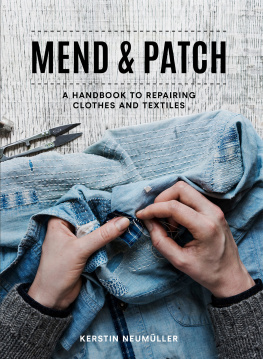

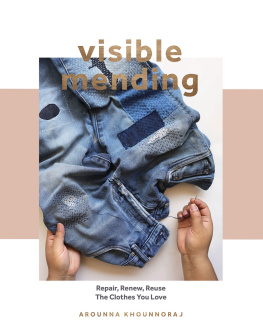

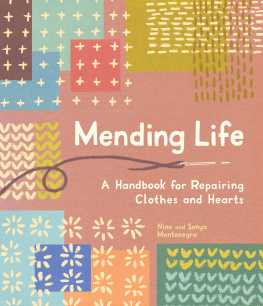
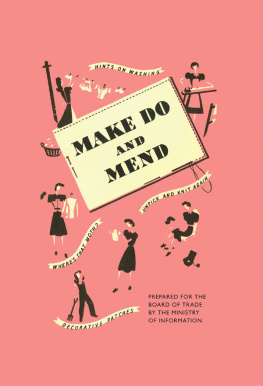
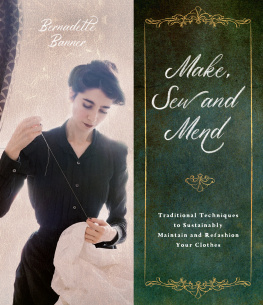
![Noriko Misumi [ミスミノリコ] - Mending with Love: Creative Repairs for Your Favorite Things](/uploads/posts/book/306555/thumbs/noriko-misumi-mending-with.jpg)
